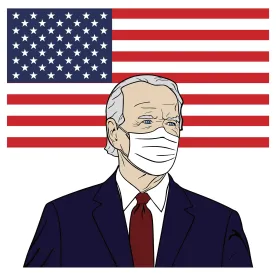On March 11, 2021, President Joe Biden signed the American Rescue Plan Act of 2021 (ARP) into law. Among the various types of funding, the latest stimulus package provides industry-specific funding for (i) small businesses, (ii) healthcare, (iii) transportation, and (iv) agriculture. In addition, the ARP includes various tax and labor and employment changes for businesses. This alert summarizes the key features of the ARP as applied to those industries, the full text of which can be accessed here.
Additional Aid for Small Businesses
The ARP provides additional options for government aid to small businesses, administered through the previous and newly created Small Business Administration (SBA) programs discussed below.
Paycheck Protection Program (PPP)
The PPP is set to end on March 31, 2021, and the ARP notably has not extended that deadline. Consequently, the window for borrowers to apply for a first or second draw PPP loan will expire at the end of the month. However, the bill does appropriate an additional $7.25 billion to the PPP, increasing total program funding to $813.7 billion. In addition, the ARP expands PPP eligibility to certain internet-only news publishers, additional tax-exempt groups, and larger nonprofit organizations that meet the outlined eligibility criteria. Lastly, the COBRA premium subsidies provided under the ARP, which are eligible for a 100% reimbursement via a payroll tax credit, are specifically excluded as eligible payroll expenses for PPP loan forgiveness. A more in-depth discussion of the PPP changes is available here.
Restaurant Revitalization Fund (RRF)
The ARP establishes and provides $28.6 billion for the new RRF, which will provide grants to certain eligible restaurants and other food and drinking establishments. Grants are equal to the revenue loss of the eligible entity due to the COVID-19 pandemic, up to $10 million per entity, or $5 million per physical location, and are calculated by subtracting 2020 revenue from 2019 revenue. However, awards will be reduced by amounts received through the PPP. Grants are also limited to certain eligible expenses outlined in the ARP, similar to the list of forgivable expenses under the PPP (such as payroll costs, mortgage and rent payments, supplies, normal food and beverage costs, and paid sick leave). During the first 21 days of the application period for the new program, the SBA will prioritize applications from small businesses owned by women, veterans, and socially or economically disadvantaged individuals, and for 60 days following the measure’s enactment, $5 billion will be set aside for eligible entities with gross revenue of $500,000 or less in 2019. Other grant funds are to be awarded on a first-come, first-served basis. Businesses may use grant funds through December 31, 2021, but no later than a date set by the SBA prior to March 11, 2023. A detailed overview of the RRF can be found here.
Economic Injury Disaster Loan (EIDL)
The ARP provides an additional $15 billion for the Targeted EIDL Advance program created by the Economic Aid to Hard-Hit Small Businesses, Nonprofits, and Venues Act (Economic Aid Act), which provides grants of up to $10,000 to small businesses located in low-income communities that have no more than 300 employees and that have suffered an economic loss of more than 30%. Of the $15 billion, the ARP stipulates that the SBA must allocate $10 billion to covered entities that did not receive the full eligible advance payments to which they were entitled under the Economic Aid Act, and the remaining $5 billion must be set aside for new supplemental payments of $5,000 to covered entities with 10 or fewer employees that suffered economic losses of more than 50% during the covered period.
State Small Business Credit Initiative (SSBCI)
The ARP also restores funding for the SSBCI, which expired in 2017, with $10 billion, including Treasury Department set asides for:
-
$1.5 billion for states to support businesses owned by socially and economically disadvantaged people
-
$1 billion for an incentive program to boost funding tranches for states that show robust support for such businesses
-
$500 million to support small businesses with fewer than 10 employees
-
An optional additional $500 million to set aside for states to provide legal, accounting, and financial advisory services
Shuttered Venue Operators Grant Program (SVP)
As previously discussed here, the Economic Aid Act appropriated $15 billion to fund the SVP. The ARP provides another $1.25 billion in funding for the SVP, of which $500,000 is reserved for providing program applicants with technical assistance. The ARP also adds that SVP grants will now be reduced by any loans received through the PPP on or after December 27, 2020.
Community Navigator Pilot Program
The ARP appropriates $100 million for the SBA to establish the Community Navigator Pilot Program, which will be an education and outreach program for small businesses. The pilot program will provide grants to, or contracts or cooperative agreements with, nonprofits, SBA resource partners, and state and local governments to facilitate small business owners’ awareness of and participation in the SBA’s various COVID-19 pandemic relief programs.
Tax Changes
Employee Benefit Provisions
The ARP made two significant changes to the individual and group medical plan market.
The ARP provides a subsidy of 100% of COBRA premiums for employees who are involuntarily terminated or experience a qualifying reduction in hours, for premiums between April 1, 2021, and September 30, 2021. Employers must “front” the COBRA premiums during this period, but can claim a 100% tax credit against their Medicare tax liability. Employers are required to provide notice and a new 60-day election period to individuals who may be eligible for the COBRA premium subsidy, which may include individuals whose qualifying event occurred up to 18 months prior.
The ARP also provides more generous premium subsidies on Affordable Care Act “exchanges” and makes subsidies more widely available for 2021 and 2022. First, any individual or family is now potentially eligible for subsidized coverage through an exchange (subsidy eligibility normally ends at 400% of the federal poverty line). Second, for eligible individuals and families, ARP makes premium subsidies more generous, as it ensures that no individual qualifying for a subsidy on an exchange will pay more than 8.5% of their income for health insurance premiums in 2021 and 2022.
Business Tax Provisions
There are some beneficial tax provisions for businesses that continue beneficial tax credits for employers.
The “employee retention tax credit” is extended through the end of the year. The credit provides employers with a dollar-for-dollar tax credit on qualifying wages paid to employees during the 2020 and 2021 tax years. The credit was previously due to expire on June 30, 2021.
The tax credit available under the Families First Coronavirus Relief Act (FFCRA) is extended through the third quarter of 2021 (the credit previously expired at the end of the first quarter in 2021). The expansion means employers that provide qualifying leave under the FFCRA (which is voluntary for 2021) are eligible for the tax credit, which is a direct offset against income and payroll tax withholdings.
As discussed above, certain eligible small businesses may receive targeted EIDL advances from the SBA. EIDL advances are additionally excluded from the recipient’s gross income. The exclusion from gross income will also not reduce or eliminate any deduction or other tax attribute to which the recipient is otherwise entitled by reason of the gross income exclusion. Similarly, the ARP excludes RRF grants from the recipient’s gross income, and provides that such exclusion will not reduce or eliminate other tax deductions or benefits to which the recipient is otherwise entitled.
Beginning in tax years after December 31, 2026, the ARP reduces the amount of a publicly held corporation’s compensation deduction available under Internal Revenue Code Section 162(m) by expanding the definition of “covered employee” to include a publicly held corporation’s eight other highest employees in addition to such corporation’s principal executive officer and principal financial officer. Under existing law, the term “covered employee” only includes a publicly held corporation’s principal executive officer, principal financial officer, plus its three highest-paid employees.
Impact on Labor and Employment
The ARP’s most significant impact in the employment arena was the extension and expansion of tax credits for employers who elect to voluntarily provide Emergency Paid Sick Leave (EPSL) and Emergency Family Medical Leave (EFML) that were originally mandated by the FFCRA, as discussed above. The ARP extended these tax credits through September 30, 2021, and also made the following additional changes:
-
A reset of the EPSL’s 10-day bank: The FFCRA provided 10 days of EPSL that could be used through December 31, 2020, which period was extended in the December stimulus bill until March 31, 2021. The ARP provides that employers may elect to grant up to an additional 10 days of EPSL starting on April 1, 2021.
-
New reasons for EPSL: The ARP adds three new criteria for EPSL eligibility: leave needed (1) to get a COVID-19 vaccine, (2) to recover from adverse reactions to the vaccine, and (3) while awaiting the results of a COVID-19 test.
-
Expansion of EFML eligibility and benefits: Originally, EFML was only available if the employee was unable to work or telework due to COVID-19-related unavailability of a child’s school or child care. Under the ARP, the EFML payroll tax credits may now be claimed for all the qualifying uses of EPSL including the two new reasons dealing with vaccines. In addition, the entire 12 weeks of EFML is now paid leave, meaning the per-employee EFML tax credit limit has been increased to $12,000.
Healthcare-Related Funding
The following are ARP highlights that should be of interest to the healthcare industry:
-
Additional funding is provided to cover COVID-19-related expenses of the healthcare industry, including community health centers, rural healthcare facilities, and skilled nursing facilities.
-
Additional funding is provided to state and local governments to continue to provide testing and vaccinations for COVID-19.
-
More accessible and affordable health insurance options are made available under the Affordable Care Act (ACA) for millions of lower- and moderate-income Americans.
-
Additional Medicaid funding is available, particularly funding to states that expand coverage under Medicaid programs.
Increased Transportation Funding
Transit Aid
The ARP provides $30.5 billion for grants to transit agencies. Permissible uses of grant funds generally include payroll costs and purchasing personal protective equipment.
Airline Assistance
The ARP also includes assistance for airlines, including the following:
-
$8 billion for airport sponsors (generally, public agencies and private owners of public-use airports)
-
$15 billion for the airline industry to help cover employee wages and benefits
-
$3 billion to create a payroll support program for aviation manufacturers
Rail Funding
The ARP contains $1.7 billion to ensure that Amtrak remains fully operational through fiscal year 2021, which includes funds to restore the frequency of daily long-distance routes.
Support for the Agriculture Industry
The ARP includes various funding to the agriculture industry, including the following appropriations:
-
$4 billion to the Agriculture Department to purchase and distribute food and agricultural commodities, including seafood, and to make grants and loans to small and midsize food processors and distributors
-
$500 million for an Agriculture Department emergency pilot grant program supporting organizations providing COVID-19 pandemic-related services in low-income rural areas
-
Such sums as may be necessary, and as much as 120% of each farmer’s or rancher’s debt on loans the Agriculture Department made or guaranteed, for loan modifications and payments to farmers and ranchers who are members of groups that have been socially disadvantaged in Agriculture Department programs
-
Grants and loans of $1.01 billion to improve land access for socially disadvantaged farmers, ranchers, and forest landowners, as well as scholarships, outreach, financial training, and other technical assistance
Eligible businesses that would like assistance navigating these various funding programs should reach out to counsel for assistance.








 />i
/>i

